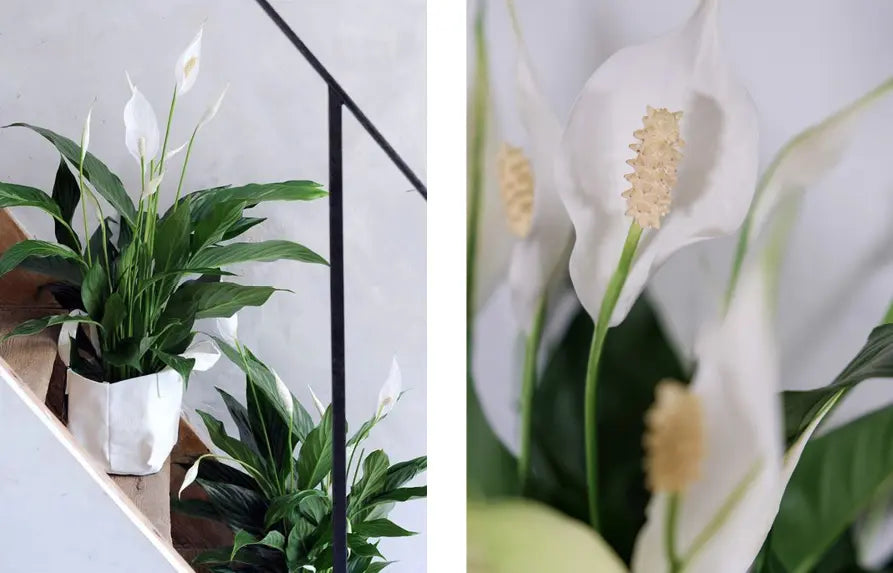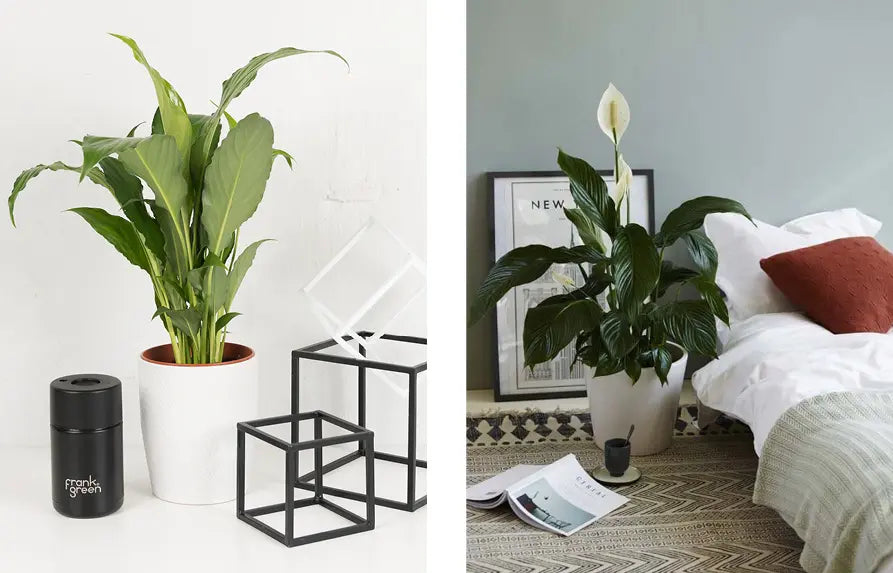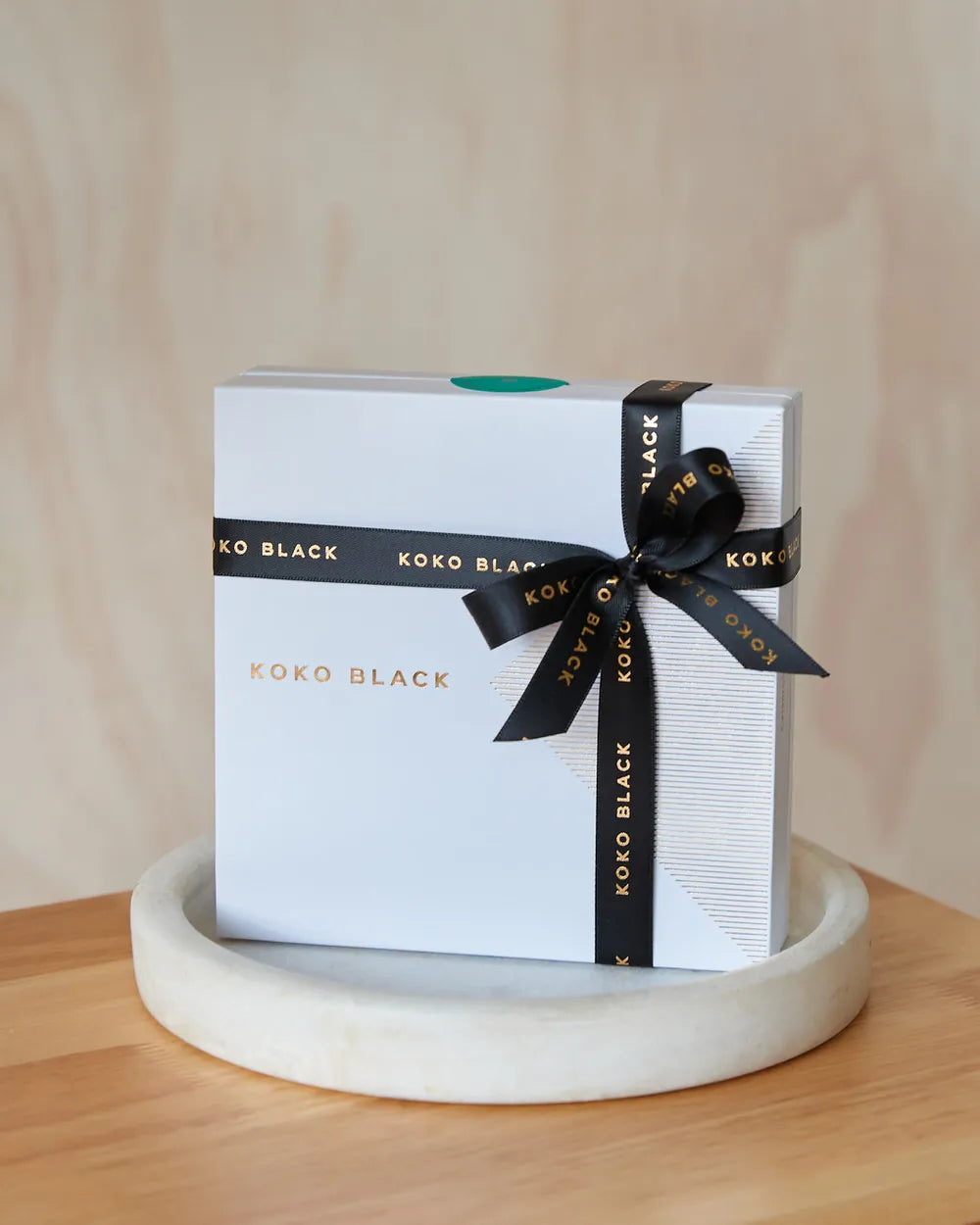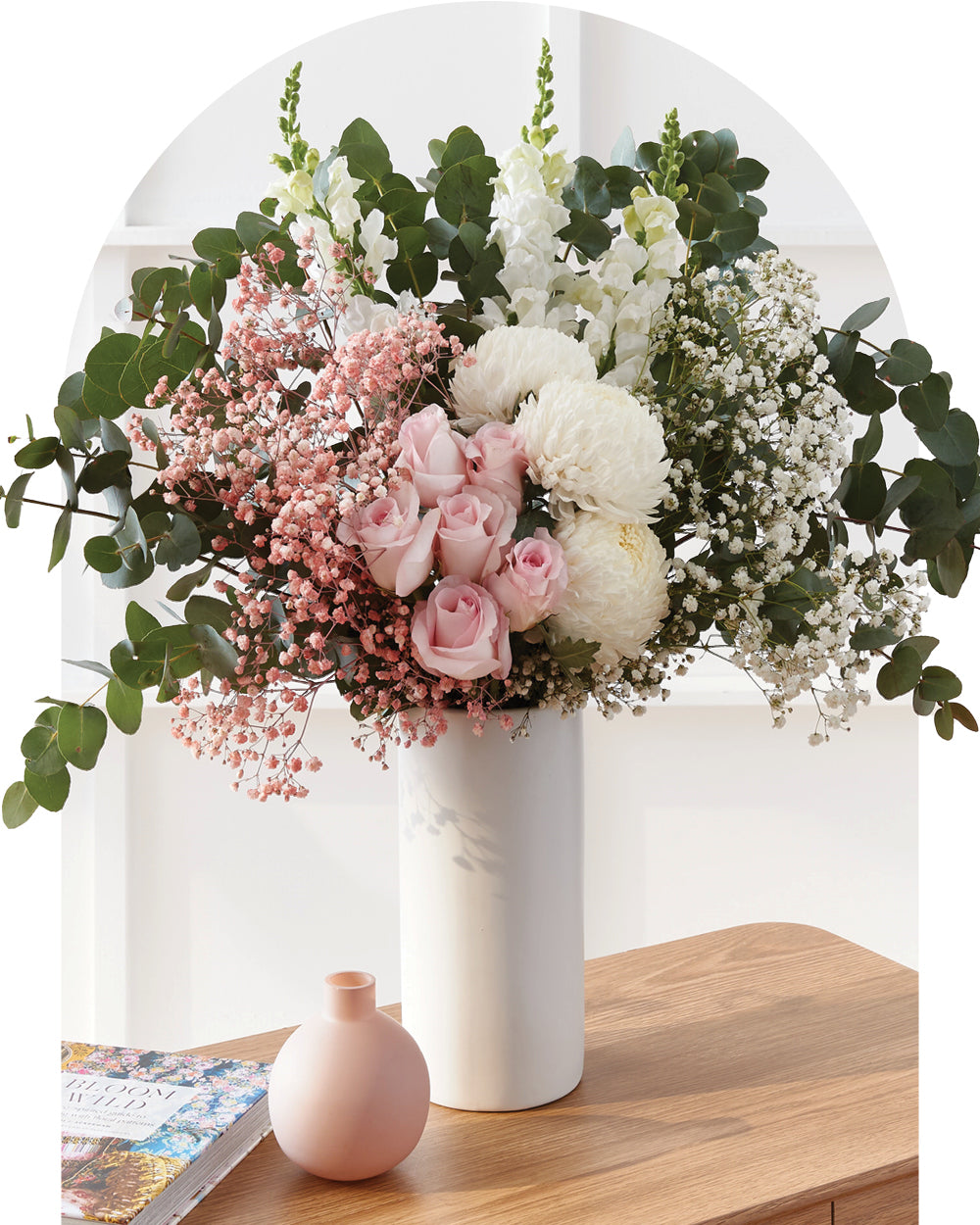Peace Lilies, philodendrons, rubber plants – indoor plants have always been that next fail-safe step-up from their fake counterparts, especially if you’re a newbie to creating your own green spaces. Let’s delve into everything you need to know about Peace Lily care! Peace Lilies produce a cool and calming collection of white flowers perfect for complimenting any living area or even small, outdoor, shaded spaces presenting the right conditions. They’re hardy with attractive foliage offering a burst of freshness and year-round colour to your home for those looking for a quaint addition for relatively minimal work.

Peace Lily Care
Peace Lilies (or Spathiphyllum) are tropical plants naturally growing amidst dense forest vegetation. They love consistent moisture and infrequent splashes of sunlight. A thriving Peace Lily plant is one that gets to soak up an indoor environment that simulates this atmosphere the best. Most will grow up to an average of 40cm inside if amongst the most generous and matching of conditions – so having few different varieties strategically positioned throughout the home will really be something to look forward to heading into their bloom! Read on for all important tips on how to care for Peace Lily plants.
1. How much light does a Peace Lily need?
Try to keep them away from windows or strong airflow and provide them with dispersed natural light. The key here is to think bright, but indirect and preferably in morning sun as opposed to searing midday or afternoon rays.
2. How often should you water a Peace Lily plant?
Keep the soil well-watered but not over-watered. A little dryness for short periods can be endured, however it’s not recommended to neglect watering for extended periods as their leaves brown quite easily. Overwatering is the most common issue and reason for a Peace Lily plant’s early deterioration. Peace Lily plants can be damaged by tap water chemicals like fluoride with filtered water being your best bet if possible. While there’s no hard and fast rule to water levels or frequencies, we recommend watering Peace Lilies once to twice per day depending on your location’s climate in conjunction with misting where appropriate – see our Tips and Tricks section below.

3. How much humidity does a peace lily need?
Peace Lilies love high-humidity environments. Rooms or areas within your home that won’t see temperatures below 16 degrees Celsius are where these plants want to stay.
4. Should I give my Peace Lily plant food?
Besides wet soil and a good level of humidity your peace lily will love a good feed herself as well. Try to fertilise your Peace Lilies with a phosphorous-rich product specifically designed to nudge plants into their flowering stages.
5. What soil does my Peace Lily need?
Hit your Peace Lilies with a medium to high grade houseplant fertiliser about every 6 weeks. These plants are mighty hardy for their delicacy and don’t require a tonne of food to survive and prosper. Begin the fertilisation process at the back end of winter to maximise its flourishment come spring and summer. Also, give your Peace Lilies an annual dose of controlled-released fertiliser for enhanced longevity.

6. How often should you repot your peace lily?
Planting and transplanting Peace Lily plants is simple. They’ll grow to between 20cm-70cm so ensure to monitor their growth and switch out their pots accordingly. When planting or repotting them, you should:
- Select an all-purpose high quality potting soil with good drainage.
- Be sure to repot in Spring for best flowering results – Peace Lilies yearn for new soil every 12 to 18 months.
- Take extra care when dividing and replanting when they outgrow their initial pots – even though they’re known to regrow quite easily following a bit of rough handling when splitting them up!
Are Peace Lily Plants Difficult To Take Care Of?
The short answer to this is, no, Peace Lilies are relatively simple to look after and are ideal for the beginner green thumb. They’re also one of the top natural air purifiers if you’re after something to revitalise your abode. Wondering how they got their name? Legend has it that they were given their relaxation-inducing title due to how their white flowers open and encompass their foliage representing peace flags – they also don’t actually have any relation to true lilies either! Not seeing any flowers? Then your Peace Lily is likely not getting enough crisp, morning sunlight. Discoloured or prematurely deteriorating flowers are also signs of poor fertilisation technique, using the wrong product or overwatering.

Further Tips and Tricks
Keep Peace Lily plants away from small children as they contain calcium oxalate similar to philodendrons, daffodils, and hyacinths. This has been known to cause respiratory and stomach issues if accidently consumed in large volumes. This also goes for pets who don’t mind a nibble too. Cats in particular seem to go nuts for the flower spikes!
- Yes, Peace Lilies can be grown in water only! – Place a stone layer at the bottom of a vase or other ornament to keep the plant’s base suspended above the water level. You want the roots to be consistently fed while keeping the leaves from being waterlogged for ideal growing conditions without soil.
- Misting improves humidity exposure – A couple of daily sprays to the leaves provides a splash of encouragement for Peace Lily plants to thrive. You can also mount the pot on a wet bed of gravel to boost humidity exposure.
- Keeping bugs at bay – Pests and Peace Lilies are a match made in heaven. Wash down the leaves with soapy water to deter mealybugs and other insects from feasting on your indoor garden.
- Remove dead leaves and flowers immediately as they finish for even better results. Check out our plants and peace lily range for more further details!

The Bottom Line
While many gorgeous yet hard-to-find Peace Lily varieties exist, this common white-leaved in-home type will add a dash of character, flavour and freshness to just about any living space. With a not-too-tricky planting, positioning and care regime, Peace Lily plants are the perfect ‘starter plant’ whether you’re just looking to decorate or have discovered a new-found interest in horticulture. Kickstart your indoor garden sanctuary with a few Peace Lily plants – a great first-time green thumb confidence booster! Reach out to our customer care team at Fig & Bloom for further information on hand-crafted bouquets, delivery requirements or for any other enquiries you may have! Alternatively, explore our recent blog articles for more plant care guides and tips!










